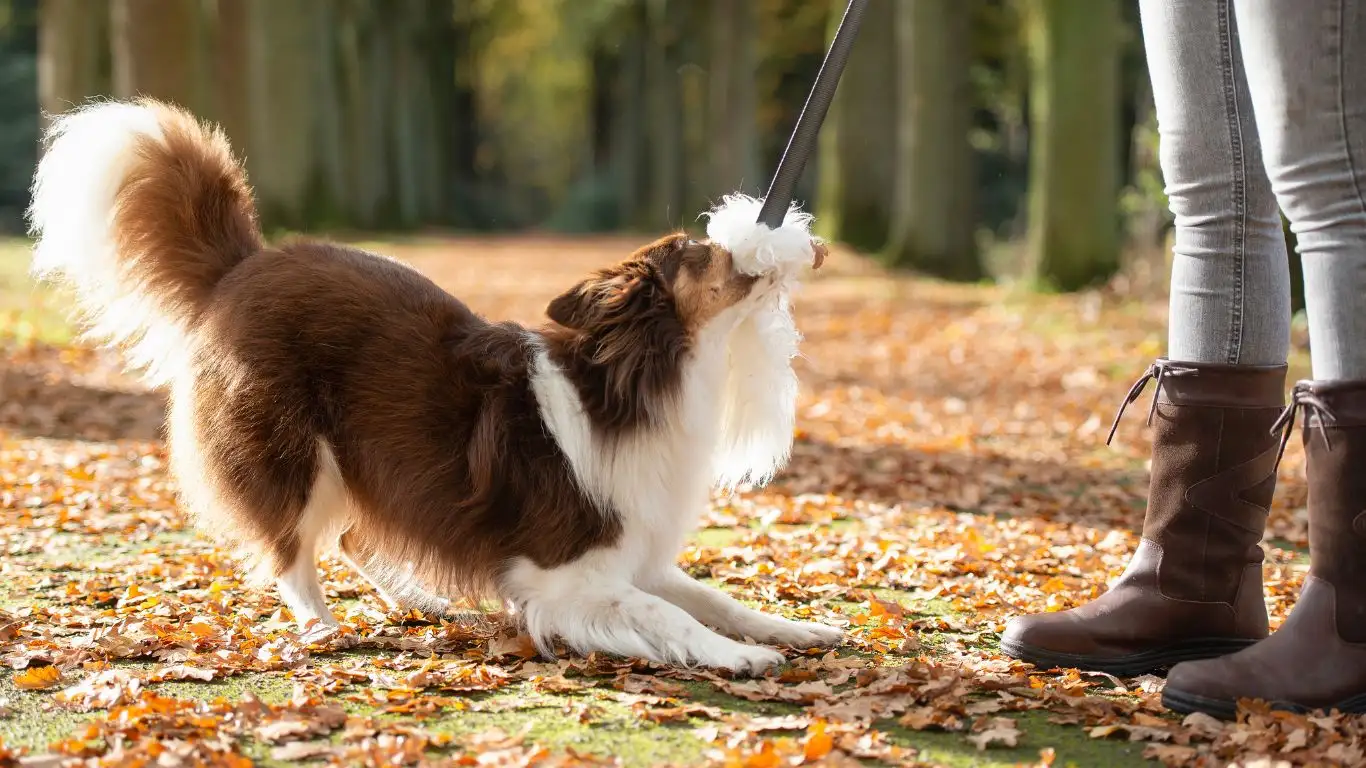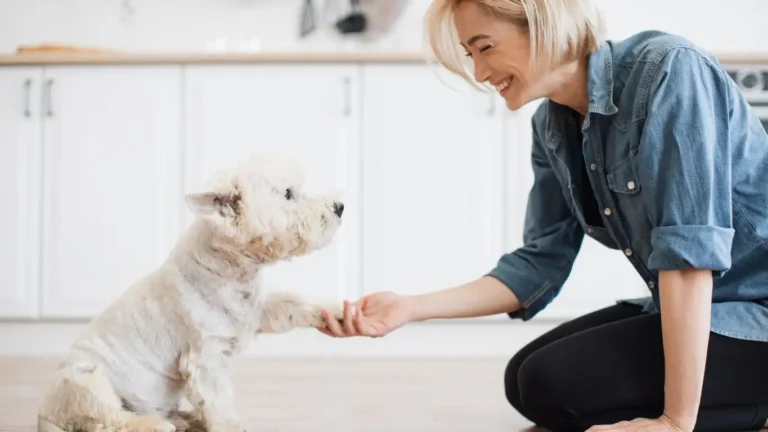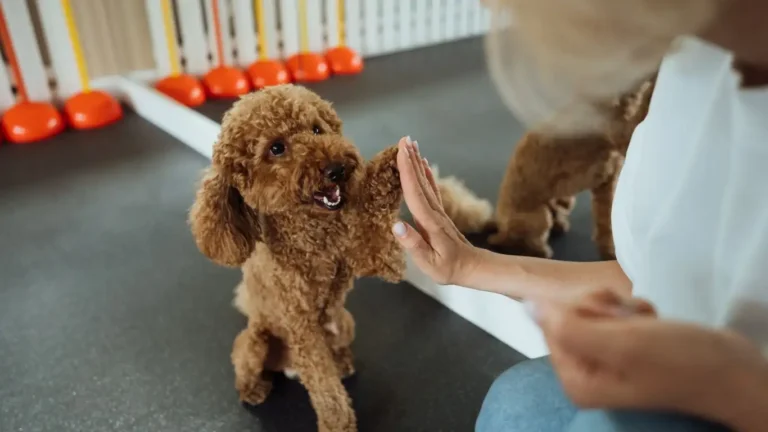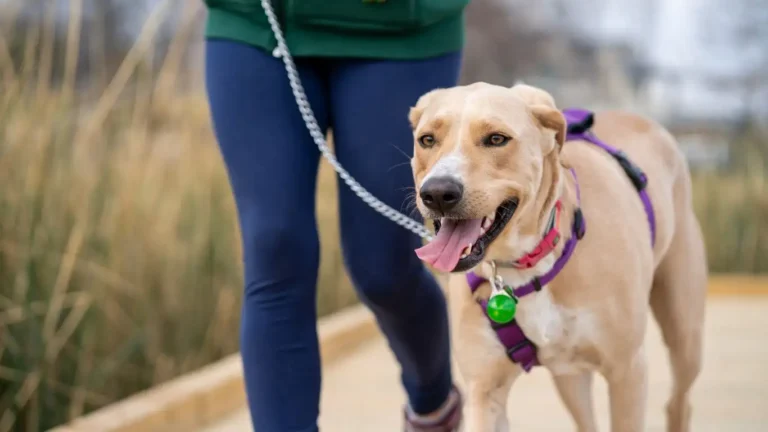Stop Dog Biting During Play: Gentle Training That Works
Playful biting is a normal part of how dogs interact with the world, especially when they’re young. But even though it’s natural, a dog that bites too hard during play can cause accidental injuries or develop dangerous habits. That’s why teaching your dog to play gently is an important part of training. It helps keep both people and pets safe while encouraging healthy, happy behavior.
Understanding Why Dogs Bite During Play
To train your dog not to bite during play, it helps to first understand what’s going on in their brain and body. Dogs use their mouths like humans use their hands—they explore, communicate, and show excitement. Biting isn’t always a sign of aggression. In fact, it’s often just a way for dogs to interact.
Puppies especially use their mouths to learn. They bite during play with littermates to figure out what’s too rough. When a puppy bites too hard, the other pup yelps or walks away. Over time, this teaches bite control, also called bite inhibition.
But if a dog isn’t corrected or socialized properly, they may never learn when a bite is too much. That’s where training comes in.
How Bite Inhibition Works
Bite inhibition is a dog’s ability to control the strength of its bite. A well-socialized dog knows how to use their mouth gently. This doesn’t mean they never bite—but they learn not to clamp down with full force during play.
This kind of control is essential for safety. Even friendly dogs can get excited and nip too hard if they haven’t learned limits. Teaching bite inhibition helps your dog develop better self-control and improves their ability to interact with people and other animals.
Training bite inhibition is especially important in homes with children, older adults, or other pets. It prevents injuries and builds trust between your dog and your family.
Common Reasons Dogs Bite During Play
- Excitement: Some dogs get so excited during play that they forget their manners.
- Lack of socialization: Dogs that didn’t play with other puppies may not know how hard is too hard.
- Teething: Puppies between 3 and 6 months often bite to relieve discomfort as their adult teeth come in.
- Redirected energy: If a dog doesn’t get enough exercise or stimulation, they may play rough out of frustration.
- Mixed signals from humans: Roughhousing with your dog might accidentally teach them that hard biting is okay.
Understanding these causes helps you adjust your training approach. For example, a teething puppy may need more chew toys, while an overexcited adult dog might need help calming down before play starts.
How to Teach a Dog Not to Bite During Play
Teaching your dog to play without biting takes time, patience, and consistency. Here are proven steps that dog trainers and veterinarians recommend:
1. Use a consistent “Ouch!” sound
If your dog bites too hard, let out a sharp “Ouch!” in a high-pitched tone. This mimics how puppies respond to rough bites in the litter. Then stop playing and turn away for a few seconds. This teaches your dog that biting ends the fun.
2. Pause play or walk away
When your dog bites too hard, pause the game immediately. Don’t yell or punish—just calmly stop the activity. Resume play only when your dog is calm again. Over time, they’ll learn that gentle play keeps the game going.
3. Offer chew toys
Redirect your dog’s biting to appropriate toys. Choose sturdy rubber toys or rope toys designed for chewing. When your dog starts mouthing your hand, swap in the toy and praise them for chewing it instead.
4. Practice calm play
Don’t encourage rough or aggressive play like wrestling or tug-of-war unless you’re confident your dog can stay gentle. Start with calm games like fetch or training tricks that reward focus and self-control.
5. Use time-outs when needed
If your dog keeps biting hard, calmly end the play session and leave the room for a minute or two. This gives your dog a clear message: biting stops all the fun.
6. Teach basic commands
Training commands like “sit,” “stay,” and “leave it” helps your dog stay focused and listen better during play. These skills also make it easier to interrupt rough behavior before it escalates.
7. Be patient and consistent
All dogs learn at their own pace. Some puppies may stop biting in a few weeks, while others may need months of steady guidance. Stick to your plan and keep using gentle corrections and rewards.
Signs Your Dog Is Getting the Message
- They mouth your hands but don’t clamp down
- They stop biting when you say “Ouch!”
- They choose toys over your hands during play
- They calm down faster when play gets too rough
Celebrate small improvements. Your dog doesn’t have to be perfect—just making progress means you’re on the right track.
When to Seek Help
Most play biting is harmless and responds well to training. But there are times when it’s best to get professional help. Talk to your veterinarian or a certified dog trainer if:
- Your dog growls or snarls when you correct them
- They bite hard even outside of play
- Biting is causing injuries or scaring people
- You feel unsafe playing with your dog
- Your dog doesn’t respond to training after several weeks
There may be underlying medical or behavioral issues that need special care. A vet can rule out problems like pain or neurological issues. A behaviorist can help if aggression is involved.
You don’t have to figure it out alone. Getting help early can prevent bigger issues later and keep your relationship with your dog strong and positive.
Takeaway
Teaching a dog not to bite during play is one of the most important things you can do for their lifelong behavior and safety. It’s about more than just manners—it builds trust, improves social skills, and keeps everyone safe.
Start by understanding your dog’s behavior, then use calm, clear training techniques to guide them. Encourage good habits and stay consistent. Most dogs respond well to positive, gentle correction.
If you’re struggling or worried, don’t hesitate to reach out to a professional. With the right tools and support, you and your dog can enjoy safe, fun playtime for years to come.





